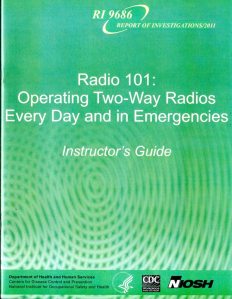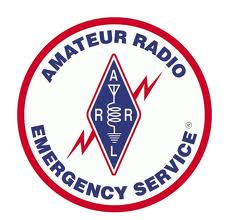 Two-way radio communication may seem like a thing of the past with smart phones and the availability of more advanced technology. However, with the recent frequency of natural disasters, storms, and other emergency situations, more attention is being paid to radios as a reliable form of communication and a possible back-up communication option, including amateur radio operators.
Two-way radio communication may seem like a thing of the past with smart phones and the availability of more advanced technology. However, with the recent frequency of natural disasters, storms, and other emergency situations, more attention is being paid to radios as a reliable form of communication and a possible back-up communication option, including amateur radio operators.
Image courtesy: Decatur County Amateur Radio Club
For example, the Times of India reports that the recent monsoon flooding disaster in the northern India state of Uttarakhand in July 2013 has prompted officials in other flood-prone regions to establish Amateur Radio facilities to provide emergency communication.
What are two-way radios and how do they work?
 Image: Amateur radio equipment. Image courtesy of the American Radio Relay League.
Image: Amateur radio equipment. Image courtesy of the American Radio Relay League.
According to Wikipedia,
A two-way radio is a radio that can both transmit and receive (a transceiver), unlike a broadcast receiver which only receives content. A two-way radio (transceiver) allows the operator to have a conversation with other similar radios operating on the same radio frequency (channel).
Two-way radios are available in mobile, stationary base and hand-held portable configurations. Hand-held radios are often called walkie-talkies or handie-talkies.
Radio 101
 A recent training publication produced by the Department of Health and Human Services, Centers for Disease Control and Prevention and the National Institute for Occupational Safety and Health called Radio 101: Operating Two-Way Radios Every Day and in Emergencies provides training materials on how to operate two-way radios. Included are an instructor’s guide, a DVD with a power point presentation and a student handbook. These training materials practice what they preach, in that they are brief, straightforward and concise– just as two-way radio conversations need to be.
A recent training publication produced by the Department of Health and Human Services, Centers for Disease Control and Prevention and the National Institute for Occupational Safety and Health called Radio 101: Operating Two-Way Radios Every Day and in Emergencies provides training materials on how to operate two-way radios. Included are an instructor’s guide, a DVD with a power point presentation and a student handbook. These training materials practice what they preach, in that they are brief, straightforward and concise– just as two-way radio conversations need to be.
While many of the scenarios used throughout the training materials apply to miners and situations where miners would need to use two-way radios, the information is generic enough that it is applicable to any emergency.
Two-way Tips
The information provided in the training materials seems like common sense, but there are a few important tips to consider when using two-way radio communication in an emergency situation:
- Less is more. Be brief and efficient; know what you are going to say before using the radio so you do not tie up the channel while you are thinking of what to say.
- Don’t mind your manners. It is not necessary to be polite, saying “please” and “thank you.”
- Repetition rocks. Repeat back information you receive to confirm that you heard the correct information.
- No privacy policy. Be aware that conversations are not private on these open channels and may be heard by others picking up your frequency. However, this downside is a big plus in emergency broadcasts and SOS situations where the operator wants as many people possible to be listening in to be able to pick up and relay his message.
License to Help
To operate an amateur two-way radio in the United States requires taking a test and obtaining a license from the FCC (Federal Communications Commission). The American Radio Relay League (ARRL) is the national association for amateur radio (also called ham radio with operators being called “hams”) in the US and “provides hams and non-hams the resources to learn, get licensed, and help others on the air.”
 Already have your amateur radio license and want to help your community? Check out the ARRL’s Public Service page for training, resources, manuals and more. The Amateur Radio Emergency Service (ARES) consists of licensed amateurs who have voluntarily registered their qualifications and equipment for communications duty in the public service when disaster strikes.
Already have your amateur radio license and want to help your community? Check out the ARRL’s Public Service page for training, resources, manuals and more. The Amateur Radio Emergency Service (ARES) consists of licensed amateurs who have voluntarily registered their qualifications and equipment for communications duty in the public service when disaster strikes.
Recently, the American Radio Relay League hosted their national Field Day where amateur radio clubs across the country gathered locally to test their radio equipment and practice communication strategies in the event of an emergency. Learn more about Field Day.
Rules of the Radio
Together with the Radio 101 training guide, two-way radio operators who want to learn the “rules of the radio” often buy the latest United States Frequency Allocations: The Radio Spectrum Chart (shown below). This poster shows through color codes the parts of the radio spectrum that are allocated to each type of radio service, including amateur (ham) radio, commercial radio and television broadcasting, radio navigation, mobile, satellite, and others.
 Finally, the definitive sources of radio regulations, frequencies and procedures can be found in the Manual of Regulations and Procedures for Federal Radio Frequency Management and the Code of Federal Regulations Title 47 (FCC Rules and Regulations).
Finally, the definitive sources of radio regulations, frequencies and procedures can be found in the Manual of Regulations and Procedures for Federal Radio Frequency Management and the Code of Federal Regulations Title 47 (FCC Rules and Regulations).
It is important to be prepared in any situation and not rely on only one form of communication. Thus, it is comforting to know that amateur radio operators are working on behalf of their communities to help during emergency situations.
HOW DO I OBTAIN these radio-related publications?
- Shop Online: Buy them online 24/7 at GPO’s U.S. Government Bookstore:
- Shop our entire RADIO Communications Collection, including these titles mentioned in our article:
- You may also wish to browse all our Emergency Management & First Responders publications as well.
- Order by Phone: Call our Customer Contact Center Monday through Friday, 8 am to 5:30 pm Eastern (except US Federal holidays). From US and Canada, call toll-free 1.866.512.1800. DC or International customers call +1.202.512.1800.
- Visit our Retail Store: Buy these at GPO’s retail bookstore at 710 North Capitol Street NW, Washington, DC 20401, open Monday–Friday, 9 a.m. to 4 p.m., except Federal holidays. Call (202) 512-0132 for more information.
- Find it in a Library: Search for them in a Federal Depository Library.
About the Authors: Our guest blogger is Emma Wojtowicz, Public Relations Specialist in GPO’s Office of Public Affairs. Additional content was provided by Government Book Talk Editor Michele Bartram, Promotions & eCommerce Manager for GPO’s Publication and Information Sales Division.

I noticed this topic was listed in “TOP POSTS TRENDING THIS WEEK”. I believe it might be the result of it being listed in a monthly newsletter from the columnist in QST magazine for ARES (Amateur Radio Emergency Service). The newsletter is available here: http://www.arrl.org/ares-el?issue=2013-12-18 Specifically, Rick Palm, K1CE, published an email I sent him as below:
“Letters: Radio 101
The Government Printing Office Bookstore has a subscription blog service on topics of interest to readers. I just received a post entitled Radio 101: Operating Two-Way Radios Every Day and in Emergencies. Readers can view it here.The majority of the post is about Amateur Radio and features ARES and information provided by ARRL.
Key publications from the government’s Radio Communications Collection including the US Frequency Allocations Radio Spectrum Chart are reviewed. It appears to be done quite well. A training publication on the above topic is available here. — Robert Bauer, KC4HM, Louisville, Kentucky, Robert.Bauer@ky.gov”
The “here”s refer to links to this blog. I never dreamed when I sent him the email about this blog that it would generate the response that it did.
LikeLike
Robert- Wow! We really appreciate your spreading the word about this blog post and the radio-related publications from the US Government Bookstore. When I wrote the post, I wanted to make more people aware of the important work that ham radio operators do and hopefully interest them in learning how to operate two-way radios themselves. It takes committed folks like yourself to get the word out about great resources available. Thanks again!
LikeLike
Thanks for your sharing,I appreciate this.keep up the good work.
LikeLike
The Radio 101 book is a tremendous resource that we recommend to even experienced users. When it comes to emergency response it never hurts to fully understand the fundamentals and basics of two-way communication.
LikeLike
Thank you for writing… We think it’s a great resource, too!
LikeLike